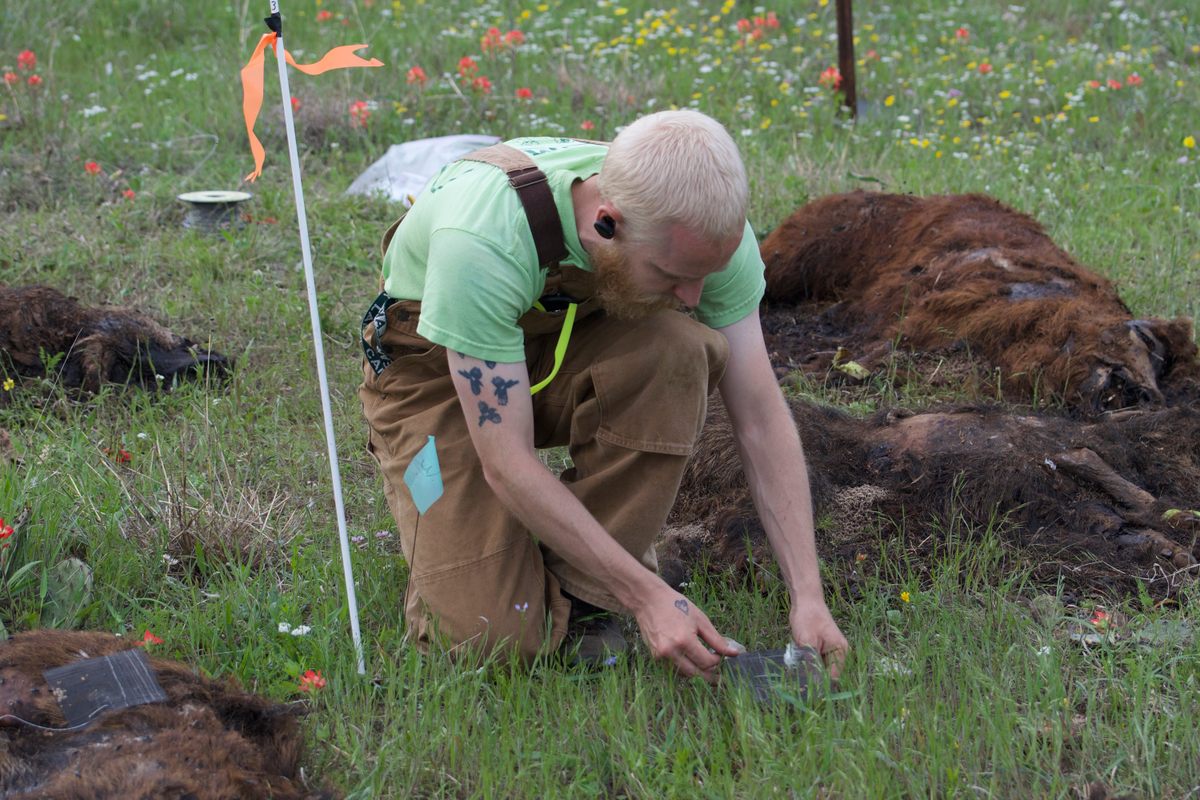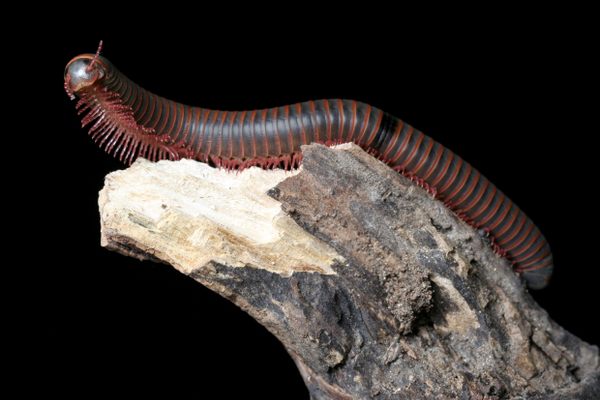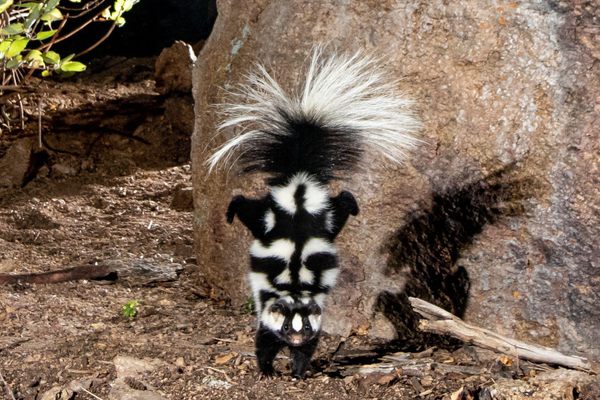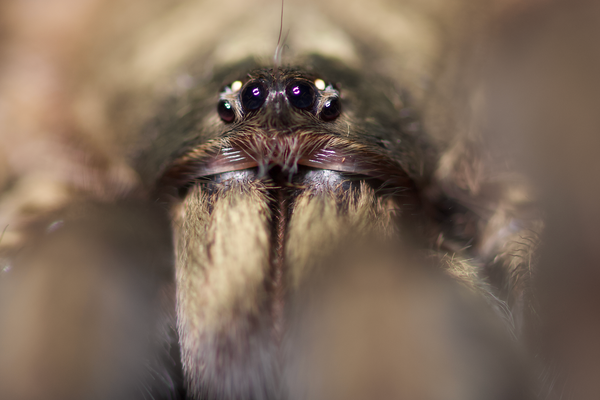Scientists Are Simulating Mass Animal Die-Offs in an Oklahoma Prairie
Understanding the ecological impact of hundreds of dead feral hogs.
It’s the smell that will never leave Brandon Barton. He has spent years dealing with tons of decomposing hog carcasses, and considers himself a “grizzled old pro,” impressively desensitized to the noxious stench. But even miles away from the field where the hogs were placed—in the name of science—sometimes the smell comes back. “Every once in a while, something will hit me,” Barton says. “If I look at the pictures of those carcasses, my brain can smell it.”
Barton, an ecologist at Mississippi State University, studies and simulates mass mortality events—MMEs, for short—to understand how a heap of dead creatures can alter the ecology of where they wind up. “There’s a long history of decompositional ecology,” he says, noting that researchers have studied the pile-ups of dead salmon that accumulate after spawning or the mounds of millions of cicadas that hatch and promptly die after waiting underground for years. But MMEs are a little different, as they represent the stuff that’s not supposed to happen, rather than as part of the natural life-and-death cycle of a population. “I study anomalies,” Barton says, such as a 2016 lightning strike that killed 323 reindeer in Norway or a warm summer in Kazakhstan that allowed a single bacteria to kill approximately 200,000 saiga antelopes. In other words, if Barton were to dump dead salmon in a river where they die en masse every year, that wouldn’t shock the ecosystem enough to count as an MME. “But if I dump a bunch of dead salmon in a forest in Mississippi,” he says, “it does.”
MMEs happen throughout the world, but they are nearly impossible to predict by their very nature. But new research suggests these events are on the rise and likely to become more frequent as climate changes and environments are stressed in new ways, according to The Guardian. In Australia, for example, recent record-breaking bushfires have led to one of the largest MMEs ever recorded, with over a billion animals estimated to have died, according to ABC News. The best way to understand the impact of these mass die-offs, Barton says, is to “gather a big pile of dead animals and watch what happens.”
While interesting, dumping several tons of salmon into a Southeastern forest isn’t exactly a cost-effective way to simulate an MME. Barton instead uses one of the one of the region’s most inexhaustible and irritating resources: feral hogs. “The Southeast is just about at all-out war with these pigs,” he says. Local trappers were happy to provide the hogs that he needed.

Barton worked on his first simulated MME in Mississippi in 2016, alongside wildlife biologist Marcus Lashley, now at the University of Florida. They dumped approximately 6,000 pounds of pig carcasses in a patch of forest generously provided by Mississippi State University. “We were originally thinking about doing it at this wildlife management area, but as soon as we started talking about bringing thousands of pounds of dead pigs, they backed off,” he says. “They said, ‘We can’t have people hiking by piles of dead pigs.’” The site was warm and humid, with mixed deciduous and evergreen forest—not that the researchers were picky. “When your experiment is putting out tons and tons of rotting pig flesh, beggars can’t be choosers,” he says.
A year later, they tried to do another one in a wildlife refuge in the Mississippi Delta, but unexpected rainfall flooded the site and washed away all the carefully placed hogs and, with them, much of the data. “But we did see a big alligator walking off with a pig,” Barton says.
In spring of 2019, Barton and two graduate students, Abby Jones of the University of Mississippi and David Mason of the University of Florida, decided to have another go, this time with nearly three times as much dead pig as the first time (around 200 animals). The new location was a large prairie grassland owned by the Nobel Research Institute in Oklahoma. The carcasses were placed four sites of six plots each, three of which got one pig and three of which got 10 pigs or more. Some plots were left to the open air, marked only by flags, and others were fenced with netting to simulate what would happen if scavengers couldn’t get to them. “Frontloading tractors would take a scoop full of pigs and dump them on a trailer to take them to each specific site,” Barton says.
At first, the sites seemed relatively innocuous, if a little macabre. But within a few days, the fumes crept in. “It gags you so that you can’t breathe, and seizes your lungs up,” Barton says. “It’s incredible.” Pigs, like us, carry microbes within their internal cavities that begin the decomposition process. As they do their work, “they just build gas until sooner or later a vulture comes and pokes a hole and then it’s gross, it’s so gross,” he says. On particularly windy days, the researchers wore sanitary masks, and they also kept stations for hand-washing and sanitizer at hand. Their rest station—where the team dined on sandwiches, donuts, and, on one occasion, barbecue—was a little farther afield.

The riotously messy decomposition meant the researchers had to get creative to get the data they needed. Mason, who was investigating the relationship between the carcasses and nearby plants, placed tiny pouches of seed beneath the carrion and, a few days later, retrieved them. It seems a simple task, but three-day-old maggot-freckled hog carcasses aren’t easy to handle. “You have to look for the firmest thing you can, such as a leg or some kind of appendage to pull the thing up, but you can feel some tearing,” Mason says. In the case of one hog, he had lost sight of the pouch and had to root around in a seeping puddle for “what seemed like forever,” he says.
In the first two weeks, the grassland around the MME sites looked charred because of the flies clinging to each blade of grass, says Jones, who has a degree in forensic entomology. “I would walk from one pig to another and seas of flies would part,” she says. “Every time you move, a big cloud of flies goes up and then goes down,” Mason says. “They would land on a decomposing animal with a ton of diseases, and then they would land on you.” Jones studied microbial changes in the soil, which meant taking a scoop from every pig plot. Mason and Jones also collected flying insects with sticky traps and maggots with tablespoons. “As soon as you scoop them, they’d be wriggling out of the jar, and you gotta push them back in,” Mason says.
It gets worse. “The poles at the center of the plot would be covered in tiny black dots, almost like tar,” he says. Those spots were fly frass—insect excrement, normally miniscule, but made visible by sheer volume. Mason also realized that many of the flies at the site were inflicted by a zombie fungus, which grows inside the fly and forces it to die on an elevated perch, the better to fling its spores on any other flies nearby.
The hogs all looked the same when they arrived, but each decomposition was different. The ones left in open, unfenced plots were scavenged by vultures, coyotes, racoons, possums, eagles, and in one case, an armadillo. While Jones worked, she noticed she was being watched. “You could see vultures sitting in trees, waiting for us to leave,” she says. “It was spooky.”

Ones under mesh either mummified or burst open from the built-up gas. In the 2016 experiment, one pile of pigs formed a “river of maggots” six inches deep and more than 30 feet long. Barton also spotted rove beetles, notorious maggot-eaters, “surfing the maggots,” he says. “It would be like literally swimming in a giant river of hamburgers, having so much food that you’re literally drowning in it.” But one aspect of the MMEs was universal: The grasses and wildflowers surrounding each hog all withered and died, Jones says, creating black halos around each site.
After deploying the pigs, the researchers visited the site every day for two weeks to monitor initial decomposition. When they returned months later, the smell was gone. All that was left were skeletons. The soil microbiome around each site was wounded, missing key species. In single-hog plots, grass had begun to regrow, often in great green plumes, fueled by the pig’s nutrients, Jones says. But in plots with multiple hogs, the grass tended to remain brown and dead. In some patches, surrounding trees had also died, with no sign of recovery.
When one animal dies, its body is naturally recycled into the ecosystem by decomposers, fueling new life. But when many animals die in one place, they leach so much nitrogen, gases, and acidic body fluids that they can overwhelm and poison the soil’s balanced population of fungi and bacteria, inhibiting their ability to recycle organic matter. The researchers found that this systemic disruption is worsened when larger scavengers are taken out of the picture (as they are in many ecosystems), since they help distribute and process organic material. The plots left open to vultures, coyotes, and also flies left less of an impact on the soil, Barton says.
Studying decaying hogs in Mississippi could have implications for mass mortality sites around the world, particularly in Australia, where bushfires have produced unprecedented amounts of animal death. These carcasses are in some cases charred and more scattered than the hog sites, but their ecological impact is likely to cascade. The country has also seen a string of other MMEs driven by extreme climate events, including millions of fish dying in the Murray Darling Basin due to droughts, 23,000 spectacled flying foxes dying due to heat waves, and 500,000 farm animals dying in a flood, Thomas Newsome, an ecologist at the University of Sydney, writes in an email.

Newsome has been studying scavenger behavior across Australia’s arid Simpson Desert, forested Blue Mountains, and alpine Kosciuszko National Park (the former flooded in 2018, and the latter two were severely burnt in the bushfires). “There is actually very little known about scavenging in Australia,” he says. “We have also been interested whether carcasses attract introduced predators like feral cats and red foxes and whether, after visiting a carcass, they predate on native animals in the surrounding areas.”
This year’s bushfire season destroyed some of the sites Newsome had been monitoring, and also interrupted his plan to conduct his first MME simulation of a larger scale, much like the ones in Mississippi and Oklahoma: the placing of a little over 13 tons of deer carcasses in Kosciuszko. But the fires have provided plenty of material for study. “There are carcasses all over these landscapes following the deaths of wildlife during and after the fires,” he says. “So we are now looking at replicating and extending our ongoing work to the areas that were burnt.”
Barton has been applying for grants to travel to Australia to assist Newsome. In the more distant future, he hopes his team’s work might be able to identify strategies for mitigating the impact of MMEs, either by treating the soil or saving certain plants.
The most important insight he’s gleaned so far is on the importance of native scavengers, which he calls the “most persecuted” group of organisms. Vulture populations are plummeting across the world, often due to poisoning both deliberate and accidental, according to Science. Eleven out of 16 vulture species in Africa, Asia, and Europe risk extinction in our lifetimes, according to the nonprofit Birdlife. But the species, which can devour more than two pounds of meat in a minute, play a massive part in speeding up decomposition and blunting the ecological impact of an MME, Barton says. “There are very few people fighting for the vultures,” he says, “but when you don’t have those guys there to clean up, we lose so much.”
You can join the conversation about this and other stories in the Atlas Obscura Community Forums.





























Follow us on Twitter to get the latest on the world's hidden wonders.
Like us on Facebook to get the latest on the world's hidden wonders.
Follow us on Twitter Like us on Facebook